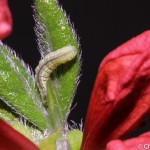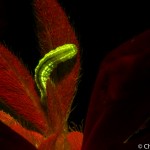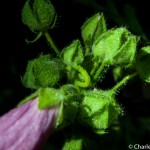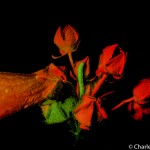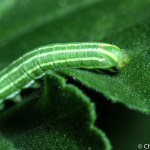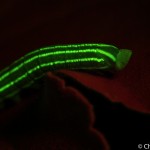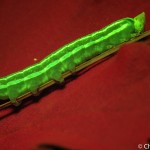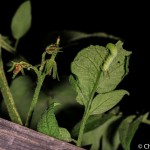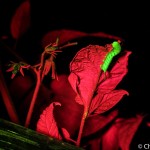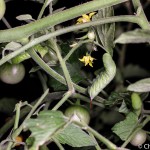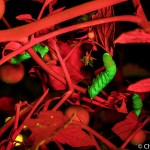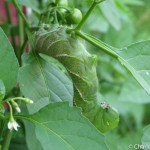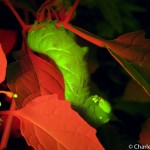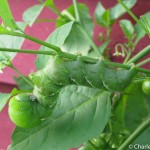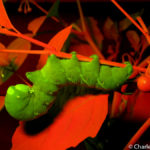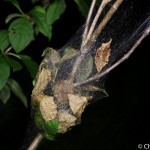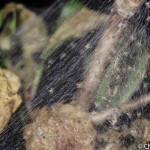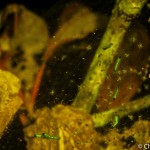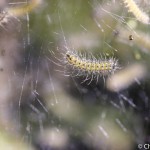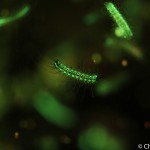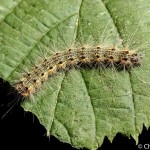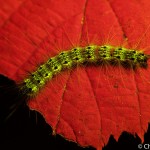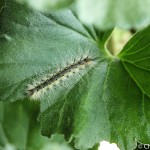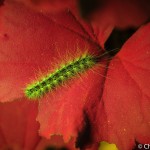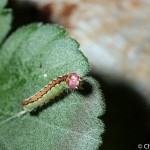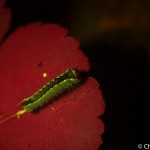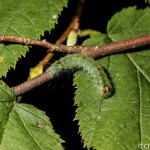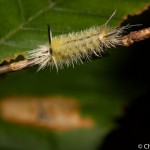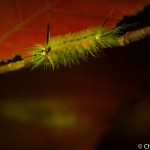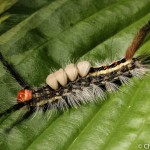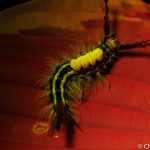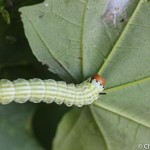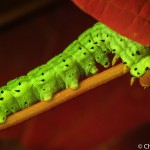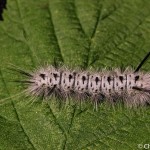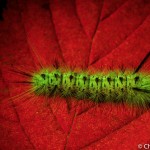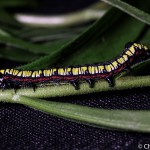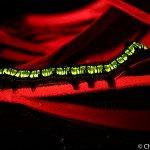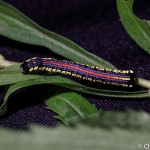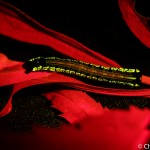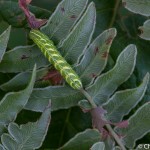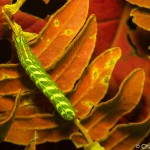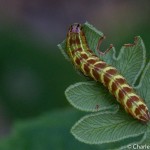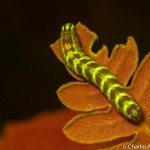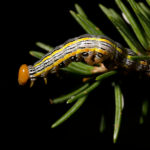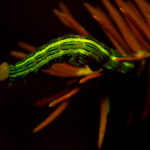Caterpillar fluorescence
A selection of white light and fluorescence images of caterpillars taken in Maine and Vermont (USA). Most of the images were made at night, first exploring in the dark with steady blue light and then photographing the subjects using either steady light or an electronic flash fitted with a fluorescence excitation filter. Some of the photos were made during the day using the technique described in the article Fluorescence Photography without Darkness.
Most of the caterpillars glow green when excited with blue light, with the fluorescence an enhancement of their color under white light. The background red you see in most of the images is fluorescence from chlorophyll in the plants. In a few of the images you can see a reddish glow that appears to come from within the body. This may be chlorophyll in the caterpillar’s gut, acquired from feeding on the leaves.
(Click any image for larger view)
Inchworms
- Inchworm on leaf, white light, Maine
- Inchworm on leaf, fluorescence, Maine
- Inchworm on flower, white light, Maine
- Inchworm on flower, fluorescence, Maine
- Inchworm on leaf, white light, Maine
- Inchworm on leaf, fluorescence, Maine
- Inchworm on leaf, fluorescence, Maine
Tobacco (tomato) hornworms
Tobacco hornworms are the larval stage of the tobacco hawk moth (Manduca sexta). They are easily confused (as we originally did) with the tomato hornworm, Manduca quinquemaculata. These hungry caterpillars can be a big problem for tomato growers. Although the caterpillars can be quite large they blend into the plant extremely well, making them tough to spot in white light. In fluorescence, however, they are really easy to spot.
- Tobacco hornworm on plant, white light, Maine
- Tobacco hornworm on plant, fluorescence, Maine
- Tobacco hornworms on plant, white light, Maine
- Tobacco hornworms on plant, fluorescence, Maine
- Tobacco hornworm, white light, Maine
- Tobacco hornworm, fluorescence, Maine
- Tobacco hornworm, white light, Maine
- Tobacco hornworm, fluorescence, Maine
Fall webworm
The fall webworm, Hyphantria cunea, makes its nest in tree limbs in late summer and early fall. The photographs of the web in a tree were taken in late July in Vermont, while the photographs of individual caterpillars on leaves were taken in Maine.
- Fall webworms in tree, white light, Vermont
- Fall webworms, white light, Vermont
- Fall webworms, fluorescence, Vermont
- Fall webworms, white light, Vermont
- Fall webworms in tree, fluorescence, Vermont
- Fall webworm on leaf, white light, Maine
- Fall webworm on leaf, fluorescence, Maine
- Fall webworm on leaf, white light, Maine
- Fall webworm on leaf, fluorescence, Maine
Various caterpillars
An assortment of caterpillars photographed in Maine.
- Early instar Splendid Dagger Moth, Acronicta superans, on leaf, white light, Maine
- Early instar Splendid Dagger Moth, Acronicta superans, on leaf, fluorescence, Maine
- Early instar Gray Dagger Moth, Acronicta grisea, on leaf, white light, Maine
- Early instar Gray Dagger Moth, Acronicta grisea, on leaf, fluorescence, Maine
- Larva of banded tussock moth, Halysidota tessellaris, on twig, white light, Maine
- Larva of banded tussock moth, Halysidota tessellaris, on twig, fluorescence, Maine
- Larva of white-marked tussock moth, Orgyia leucostigma, on leaf, white light, Maine
- Larva of white-marked tussock moth, Orgyia leucostigma, on leaf, fluorescence, Maine
- Green-striped mapeworm, Dryocampa rubicunda, on leaf, white light, Maine
- Green-striped mapeworm, Dryocampa rubicunda, on leaf, fluorescence, Maine
- Hickory Tussock, Lophocampa caryae, white light, Maine
- Hickory Tussock, Lophocampa caryae, fluorescence, Maine
- Brown-hooded Owlet, Cucullia convexipennis, white light, Maine
- Brown-hooded Owlet, Cucullia convexipennis, fluorescence, Maine
- Brown-hooded Owlet, Cucullia convexipennis, white light, Maine
- Brown-hooded Owlet, Cucullia convexipennis, fluorescence, Maine
- Fern moth caterpillar, Callopistria spp., white light, Maine
- Fern moth caterpillar, Callopistria spp., fluorescence, Maine
- Fern moth caterpillar, Callopistria spp., white light, Maine
- Fern moth caterpillar, Callopistria spp., fluorescence, Maine
- Symmerista spp., white light, Maine
- Symmerista spp., fluorescence, Maine

